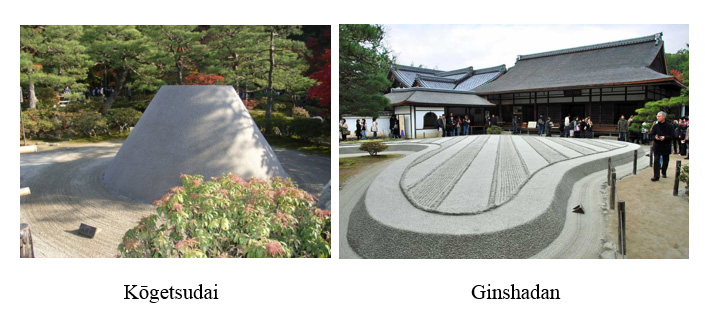Questions
Quick questions
You should be able to answer these questions without too much difficulty after studying this TLP. If not, then you should go through it again!
-
Which of these factors do not influence the angle of repose taken up by a pile of granular particles?
-
Which of the following systems of granular materials exhibit dilatancy?
-
Inspired by this TLP, you purchase some corn starch and mix it with water in the ratio by volume of 1 part water to 2 parts corn starch to make a thick paste of corn starch which you pour into a large plastic container. The surface of the corn starch is then hit quickly with a rubber mallet so that the time of contact with the surface is 100 milliseconds or so. What happens to the surface of the corn starch?
Deeper questions
The following questions require some thought and reaching the answer may require you to think beyond the contents of this TLP.
-
Ginkaku-ji ('The Silver Pavilion') is a Zen temple in Kyoto, Japan renowned for its meticulously maintained raked dry sand garden called Ginshadan known as the 'sea of silver sand' next to which there is a massive 1.8 m high sand cone platform called Kogetsudai said to symbolise Mount Fuji.

The 'angle of repose' of Kogetsudai is impressively high, as are the angles of repose in Ginshadan. Which of the following are the most likely explanations for how these angles of repose are maintained?
- a The sand is highly angular, very cohesive and has a high coefficient of friction because it is unusually rough to enable the sand particles to form such steep structures.
- b Moisture, e.g., water, is added to the dry sand daily to enable the structures to be maintained, just like the shapes of sandcastles can be maintained by adhesive forces generated by capillarity between grains.
- c The dry sand contains some cementitious binding agent such as cement, gypsum mortar or lime mortar cunningly disguised in the white sand.
- d The custodians of such dry sand gardens have secrets handed down to them by their predecessors over the years which science has yet to establish.
-
Soil in an embankment is made progressively more wet by unusually heavy rain. What measures should be in place during the construction of the embankment and its subsequent maintenance to reduce the risk of possible failure of this embankment?

